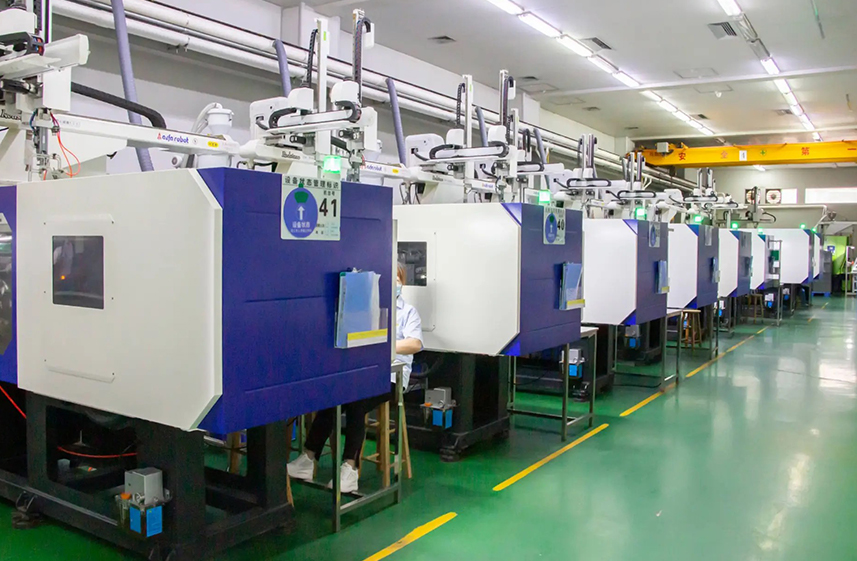



Injection molding is a manufacturing process that involves melting plastic pellets through heating and pressurization, then injecting the molten material into a mold cavity to form finished products. This method is widely used for mass-producing plastic components. Below is a systematic breakdown of its workflow and underlying principles:
Drying Treatment
Hygroscopic polymers (e.g., nylon/PA) absorb ambient moisture, which vaporizes during molding, causing surface defects like silver streaks or bubbles.
Example: PA pellets typically require 4–8 hours of drying at 80–100°C.
Material Mixing
Additives (colorants, reinforcing agents) are blended with base resin using high-speed mixers to ensure homogeneity. Critical for achieving target mechanical properties and aesthetics.
Mold Closure
The moving and fixed mold plates are pressurized under high clamping force (measured in tons) to withstand injection pressure. Precision alignment prevents flash (excess material leakage) and ensures dimensional accuracy.
Example: Electronics housing molds demand micron-level tolerances.
Plasticization
Pellets enter the barrel via a hopper. Heated zones (electric/thermal) melt the resin while a rotating screw generates shear heat, homogenizing the melt—akin to stirring melting ice into water.
Injection Phase
The screw acts as a plunger, injecting molten plastic at high speed (50–300 mm/sec) and pressure (70–300 MPa).
Critical Parameters:
Injection Speed: Too fast → bubbles/flash; too slow → premature solidification (short shot).
Pressure: Adjusted per material viscosity and mold complexity.
Compensation for Shrinkage
Sustained pressure (80–90% of injection pressure) compensates for thermal contraction during cooling. Packing time correlates with part thickness—e.g., thick parts require extended packing to prevent sink marks.
Solidification Control
Coolant circulates through mold channels (forced cooling) to extract heat. Cooling rate dictates:
Crystallinity: Semi-crystalline polymers (e.g., PP, PE) develop varying crystal structures, affecting strength.
Dimensional Stability: Faster cooling minimizes warpage but may increase internal stress.
Demolding
After reaching ejection temperature, molds separate at controlled speed to avoid part deformation.
Ejection
Ejector pins/plates push the part out. Uneven force causes scratches or distortion. Excess material (flash, sprue) requires trimming.
Thermal Energy
Barrel heaters elevate pellet temperature beyond the polymer’s glass transition temperature (Tg) or melting point (Tm), transforming solids into a viscoelastic state.
Shear Effect
Screw rotation generates frictional heat and shear thinning, breaking polymer chains’ intermolecular forces to enhance flowability.
Pressure-Driven Flow
Injection pressure overcomes melt viscosity and frictional resistance in mold channels. Pressure gradients influence filling patterns.
Temperature Dependence
Higher melt temperatures (within degradation limits) reduce viscosity, improving cavity-filling efficiency. Barrel zones require precise thermal profiling.
Heat Transfer
Conduction through steel molds dissipates heat. Cooling time governs 60–80% of total cycle time.
Phase Transition
Crystalline Polymers (e.g., PP): Molecules reorganize into ordered lattices, releasing latent heat and causing significant shrinkage.
Amorphous Polymers (e.g., PC): Chains freeze randomly without crystallization, yielding lower shrinkage.